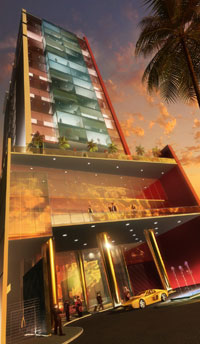Why is it a good time to buy real estate in Panama City, Panama now? So many Americans are losing their jobs every month, and many others are losing their homes or in danger of losing them, how can investing in real estate be a good idea?
According to the government of Panama on Internet reports, now is a good time to invest in real estate in Panama for many reasons, including the fact the real estate market is so stable in the country that investors can be sure the value of their investment will remain stable or increase for the next ten years. Although factors can change, the value of real estate is expected to remain stable.
For those who choose to buy real estate to live in Panama, or as an investment to sell, those moving to Panama will find a low cost of living, despite the gloomy economy worldwide. The will also find a beautiful area, excellent ambiance, and convenient daily living. According to Internet reports, the climate in Panama is excellent, tropical all year round. Residents will find a good educational system and economic stability. If you own a condo in Panama, you can look out on the sand and waves, and hear their roar, as you are eating breakfast and drinking a cup of coffee.
Real estate in Panama has boomed over the last several years, offering benefits, including tax benefits, banking opportunities for those who buy, and comforts for those who buy. Many real estate investments will bring spas, pools, and gyms to the buyers.
The government of Panama has recognized the growth in real estate sales and investments in its country and that now is a good time to invest in real estate in the country. The Instituto Panameño del Turismo (Institute of Tourism) has developed a publicity campaign to advertise Panamanian real estate projects. As a result many tourists who come to Panama City, Panama, including retirees, may discover that not only is the area beautiful but that real estate can be a good investment now for many reasons, including: the tax benefits available, all the amenities that come with property, many banking options, and the beautiful area they can live in for the rest of their lives.
Those wanting to buy real estate in Panama City, Panama, can discover many benefits available for foreigners, if they obtain a visa, including: the ability to import domestic or personal articles to their new home; the ability to import a new vehicle every two years; discounts of 15% for most services and products at hotels, restaurants, movies and other services for those that are retired; and the exoneration of the inheritance tax.
Those who buy real estate in Panama City, Panama, will be able to enjoy beautiful white sandy beaches, palms, unforgettable sunsets, fantastic landscapes, and amazing colors. You will find the coasts of the Pacific and Caribbean Oceans to be beautiful, corral reefs, marine life and areas to go scuba diving and snorkeling.




 Posted by internationalsalesgroup
Posted by internationalsalesgroup